Parishes and Migration in the Swiss Canton of Ticino
When I visit the numerous churches and chapels in Ticino, the Italian-speaking part of Switzerland located south of the Alps, I am always struck by their extraordinary artistic and historical richness. One explanation is the flourishing of devotions and religious art which characterised most Catholic countries after the Council of Trent. This is certainly true especially in the Italian area, to whose cultural sphere the Ticino belonged (even though it fell under Swiss political control in the sixteenth century), but there are other reasons. In fact, a crucial further factor needs to be considered: migration. On the one hand, over the centuries, thousands of people associated with the building trades left their homes in the Lake Lugano region to practice their skills as architects, masons, master builders, stucco workers, stonecutters, sculptors and painters abroad. This phenomenon was generally seasonal and whilst staying in their villages, the artisans helped to build or embellish churches and chapels. On the other hand, many migrants associated with other professions donated substantial parts of their earnings to devotional and charitable purposes.
The migrants’ faith and generosity are still visible in many churches and chapels of these territories, particularly in the Pedemonte region, the Centovalli and in the villages surrounding the town of Locarno. Inhabitants of these places had migrated to different Italian cities – especially Livorno, Florence and Rome – for centuries. Exclusively men, they worked as porters (facchini), coachmen (vetturini), chimney sweeps and food-sellers (rosticcieri), to mention just a few professions. In Livorno and Florence they were even able to obtain the monopoly of the porterage trade.
The following pictures shall help to illustrate the impact of migration as it is still tangible today.
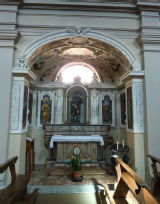
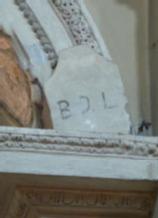
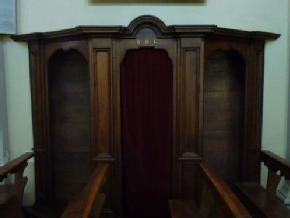
§ Figures 1, 2 and 3 – Chapel of S. Rocco (St Roch, 17th century) in the parish church of S. Maria Assunta (Assumption) in Tegna (Terre di Pedemonte, bailiwick and pieve of Locarno)
On the balustrade of many chapels, and in one case even on a confessional box, we can often find the inscription “B.D.L”, an acronym which means “Benefattori di Livorno” (“Benefactors of Livorno”). The migrants active in Livorno gathered in groups and used to collect money for their parishes and brotherhoods.
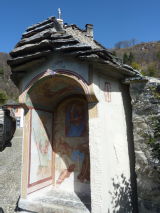
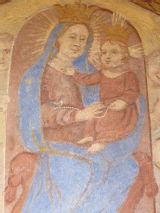
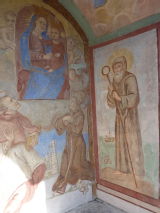
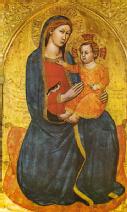
§ Figures 4, 5, 6 and 7 – Chapel in Verscio (1740) (Terre di Pedemonte, bailiwick and pieve of Locarno); and Our Lady of Montenero in Livorno (14th century)
References to migration and urban experiences also appear in specific devotions. In many churches of this region, even in small chapels deep in the forests, dozen of paintings depicting the Virgin of Montenero can still be found. Here we can see the original painting at Livorno and a very ‘rustic” copy in Verscio. The shrine of Our Lady of Grace of Montenero is located on a hill overlooking Livorno. The Madonna di Montenero, nowadays patron saint of Tuscany, was already widely venerated in seventeenth and eighteen-century century Livorno. In the chapel in Verscio, under the picture of the Virgin Mary and two further saints, we can see details of the port of Livorno (lighthouse and ships).
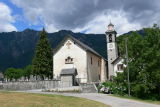
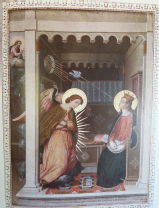
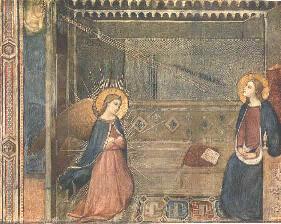
§ Figures 8, 9 and 10 – Parish church of S. Michele (St Michael) in Palagnedra (bailiwick and pieve of Locarno), Virgin of the Annunciation in Palagnedra (Lorenzo Cresci, altar piece, 1602) and Virgin of the Annunciation in Florence (fresco, 14th century)
A similarly imported devotion concerns the Virgin of the Annunciation of Florence. A copy of the famous and miraculous painting kept in the basilica of the Annunciation in Florence (fig. 8) can still been admired in the parish church of Palagnedra (fig. 9 and 10), a village in the Centovalli, also in the bailiwick of Locarno. This work of art was commissioned by migrants resident in Florence, as recorded in the inscription under the painting.
These are two very good examples of religious and devotional transfers. Further evidence can be found in rural brotherhoods, where migrants followed customs and devotions they had come across in major cities.
Bibliography
Adamoli Davide, Fratelli per l’eternità. Storia delle confraternite nei baliaggi sudalpini in epoca moderna, PhD presented at the Université de Fribourg and the Università Cattolica del Sacro Cuore di Milano, April 2014 (forthcoming).
Beard Geoffrey, Stucco and Decorative Plasterwork in Europe, London, Thames & Hudson, 1983.
Damiani Cabrini Laura, Seicento ritrovato: presenze pittoriche “italiane” nella Lombardia svizzera fra Cinquecento e Seicento, Milano, Skira, 1996.
Gambi Lucio (ed.), “Col bastone e la bisaccia per le strade d’Europa: migrazioni stagionali di mestiere nell’arco alpino nei secoli XVI-XVIII: atti di un seminario di studi tenutosi a Bellinzona l’8 e il 9 settembre 1988”, in Bollettino storico della Svizzera italiana, vol. 103, fasc. I-IV, gennaio-dicembre 1991.
Muchembled Robert (ed.), Cultural exchange in Early Modern Europe, Cambridge, Cambridge University Press, 2006-2007.
Orelli Chiara, “Migrazione e mestiere: alcuni percorsi di integrazione nelle città lombarde e toscane di “migranti” dalla Svizzera italiana (secoli XVI-XVIII)”, in Meriggi Marco, Pastore Alessandro (ed.), Le regole dei mestieri e delle professioni, secoli XV-XIX, Milano, Franco Angeli, 2001.
Rüsch Elfi, I monumenti d’arte e di storia del Canton Ticino IV, Distretto di Locarno IV (La Verzasca, il Pedemonte, le Centovalli e l’Onsernone, Berna, Società di storia dell’arte in Svizzera SSAS, 2013.
